An “Amish Megalopolis”?
This title is meant to be a bit tongue-in-cheek. What I’m referring to though, is an interesting development brought to my attention by reader Al in KY.
I’ve noted here in the past how the Elkhart-LaGrange and nearby Nappanee Amish settlements (first and third largest in Indiana) have essentially “grown together” in that their areas touch and overlap. For example: “Even in 2006, Amish settling in the region between the two communities were faced with the choice of which settlement to attend church in.”

But Al notes that this same thing has now happened with the Centreville community (largest in Michigan), to the north of Elkhart-LaGrange. Quoting Al, who noticed this reported in Amish correspondence publication The Budget:
One of the Budget scribes from Shipshewana (Mrs. Al Leanna Fry) wrote in her weekly Budget letter (news) the first part of July that she and her husband had recently attended church in one of the Centreville, Michigan Districts which is right across the border from LaGrange County, Ind.
She said she learned during that visit that there is no longer any gap between the boundary of the Centreville Amish settlement and the Elkhart/LaGrange settlement and no longer any gap between the boundary of the Elkhart/LaGrange settlement and the Nappanee settlement.
Would this be the first time that this has happened with three Amish settlements (two of which are amongst the Twelve Largest Settlements in the U.S.)?
My impression is that it most likely is the case that it’s the first time three settlements of such size have overlapped or geographically “met” like this.
I passed this topic on to Joe Donnermeyer of Ohio State University who shared some interesting observations of similar situations:
I guess these days we could call it “Amish suburban sprawl”…Hostetler, in a chapter he wrote in 1980 about the failure of Amish communities in the western states, observed that long distances (in reference to extinctions) did indeed make a difference, so, proximity does as well (to sustain settlements).
The Greater Holmes County settlement and the Lakeville (a Dan church) in western Holmes County is another example. I know there is at least two communities in one of the central valleys of PA that overlap now.
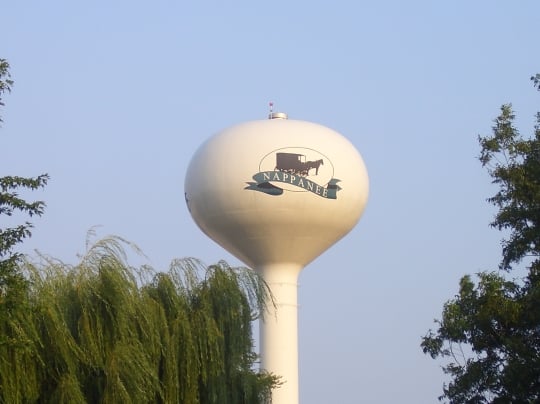
He also adds this related note:
There are counties like Crawford and Mercer Counties in PA or Knox County in OH with five or more settlements. So, even if communities are not yet contiguous, they enjoy the advantages of other nearby Amish, and likely foreshadow where future contiguities will occur.
In any case, by my rough Google-mapping this makes a rough triangle of about 60 x 60 x 30 miles traced from the Centreville community to the southwest side of the Nappanee settlement to the eastern edge of the LaGrange County Amish area and back up to Centreville again.

By similar rough Google-mapping this would be larger than the general area covered by the Holmes County and Lancaster County communities (though still having a bit fewer Amish people in this Indiana-Michigan “Amish megalopolis” – around 36,300 total – than in either of those two largest of Amish communities).


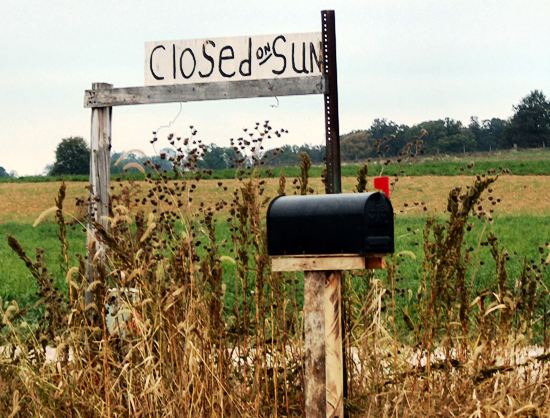

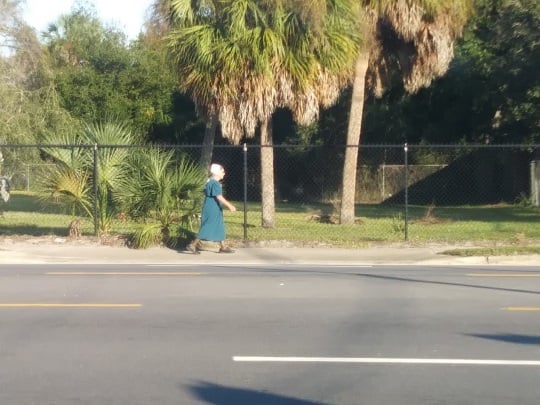
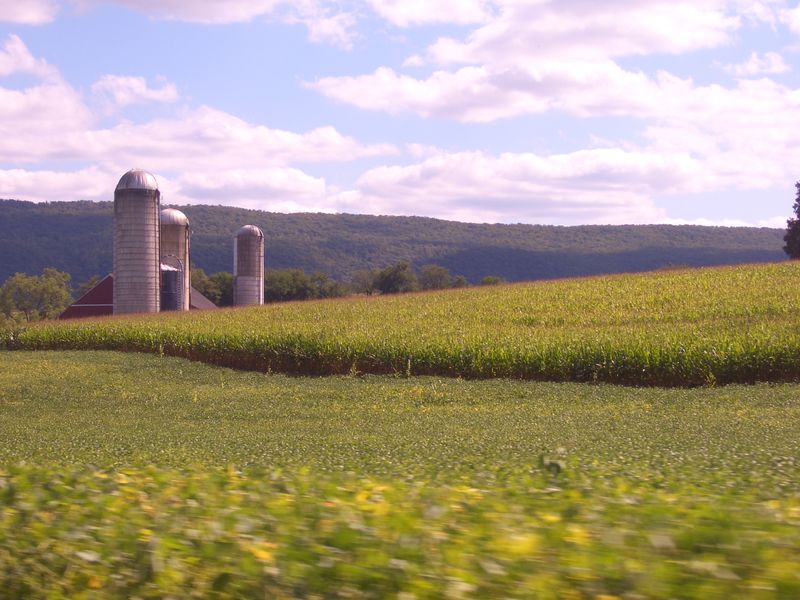

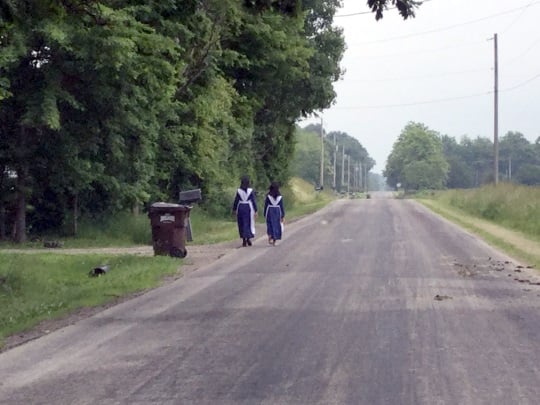
I need to clarify something. I remembered reading about the boundaries of the Centreville/Elkhart-LaGrange/Nappanee settlements in an issue of The Budget I received around the first of July. I saved that issue and looked it up today and saw that it was actually dated June 22, 2022. (My Budget often arrives a week or so after it is published.) In the words of a Budget scribe from Shipshewana (Mrs. Al Leanna Fry), she wrote that while at church in the Centreville settlement recently, “one of the ministers mentioned that day: Nappanee, Tri-county (Elkhart/LaGrange/Noble) and Centreville (settlements) have literally grown together.”
The additional information you provided, Erik, about the geographical size of the whole area is very interesting. A general population growth rate for the Amish that is often used is that Amish population is doubling every 20 years. Using figures from the Amish Studies Department of the Young Center, with a current combined Amish population of over 36,000 in those three settlements, in 20 years, the combined Amish population of the three settlements will be over 72,000.
Sprawl extends to Bremen, Marshal, Kosciusco and St Joe Co's in Ind.; arguably to Branch + Hillsdale Co's in Mich.
Truth be told, the sprawl in your story also extends west of Nappanee to first, unofficial ‘Rentown’ and Bremen in Marshall Co., Ind., and also north into St. Joe County, Ind. (home of Notre Dame). The Nappanee settlement goes south into Kosciusco Co. East of St. Joe Co, Mich. (Centerville) are the settlements in Branch and Hillsdale Co’s in Michigan. This could bring the actual county count up to 8 across Indiana and Michigan, depending on the degree of contiguousness one accepts. I’m sure that buggies do make these trips across all the mentioned county lines without it being Budget-worthy news.
(picture from an annual event in Rentown:
https://tinyurl.com/safety-demonstrator-buggy-Ind)
Right, I’m aware of the general geographical scope of these communities and took that into account when estimating. The main bit I wasn’t clear on is the northern edge of the Centreville community so I just used the town itself as a map point
Northern Indiana Megalopolis: One Group
I would refer to the latest updates of the respective directories to determine the sprawl or peripheries of this northern Indiana “megalopolis”. Current interior districts in a large settlement can only become smaller in size and more dense when subdividing, while the growth in area occurs only at the peripheries. True, they do have a slightly different history and considerable variation in current rules, both within and between the settlements. I feel it is noteworthy to consider that, unlike Holmes County and perhaps some other large settlements, the 200+ districts are essentially one group or affiliation. Theoretically, I believe all of them can work together with any of the congregations, but practically, don’t need to, and can find plenty most nearly like themselves. One of my cousins from the Shipshewana area told me over a year ago that they have a small group, from several districts, who meet together, and consider themselves “new order.” Otherwise, I don’t know of any organized New Order congregations here. It should be noted that “new order” is not defined by technology or church Ordnung, but primarily refers to a different approach to faith and life. They are a subgroup within the horse-and-buggy Old Order Amish. As an Octogenarian, I grew up east of Goshen right in the middle of this interesting Midwest area. As a school boy I remember my Dad saying there were 22 Amish churches, and my Grandpa drove his horse and buggy to “Nappanee” to visit his brother.